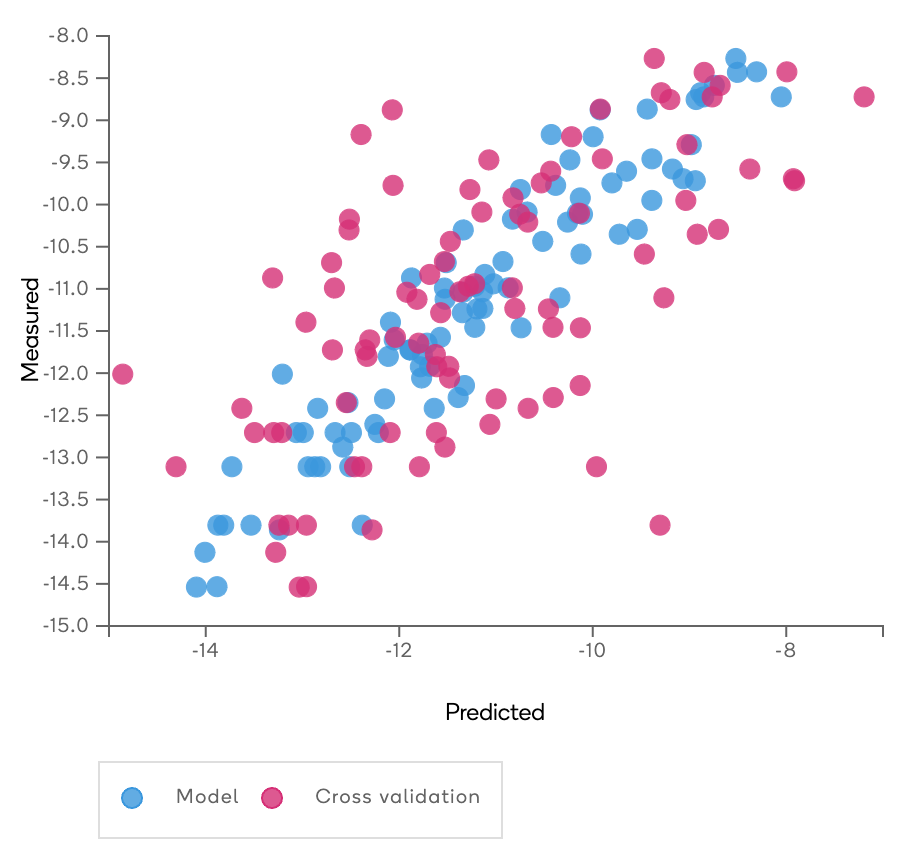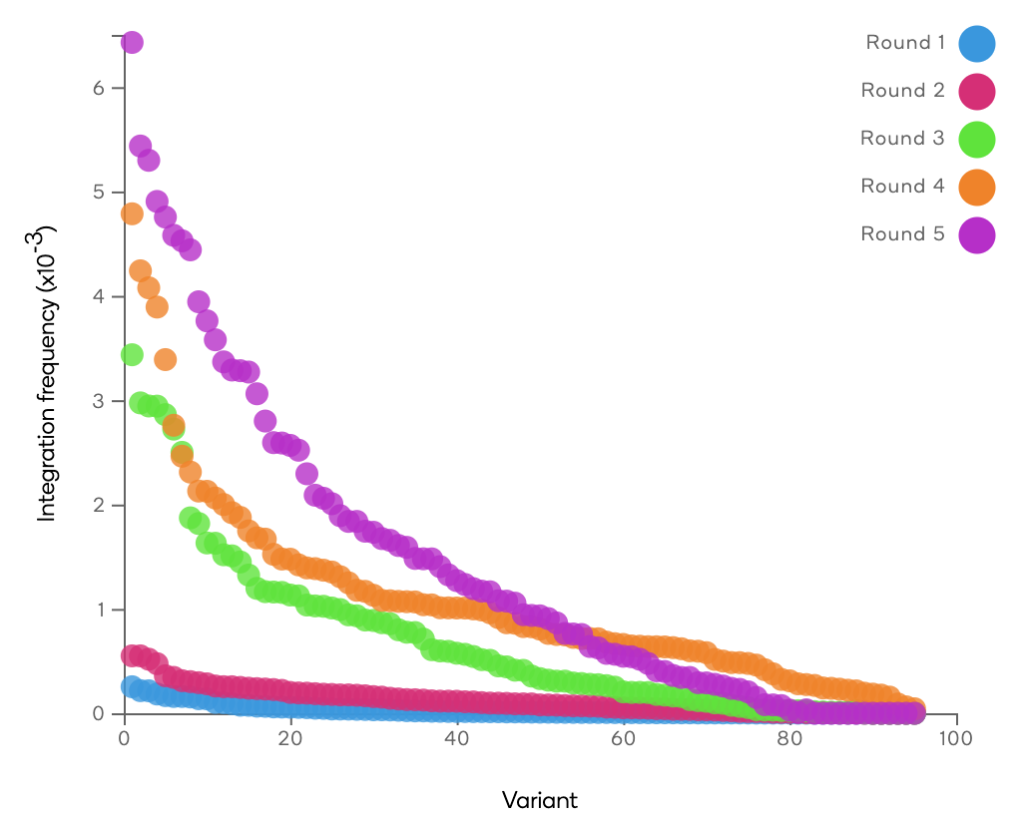GPS Technology
Applying the GPS Platform
The GPS platform is a key differentiator across
ATUM’s products and services.
- DESIGN: Define Independent Variables and Design Variants
The independent variables are the sequence characteristics on which the activity of a biological molecule depends. Examples include the codons used to encode each amino acid within a protein, the identities and configurations of regulatory elements within a vector, and amino acid changes within a protein.
Once we have identified the appropriate variables, we use DoE tools including but not limited to codon optimization and codon usage analysis, to build a set of variant molecules such that the independent variables are distributed to facilitate subsequent analysis. The number of variants is small (always fewer than 100 and sometimes as low as a dozen) because fewer variants to measure means more precise measurements of functionally relevant properties.
Why GPS is better than a library approach
GPS
Balanced sampling of sequence space using a mathematically optimal design of Infolog® sequences.
Library
Imbalanced and incomplete sampling of sequence space despite a much greater number of variants, because of the inherent biases of library construction.
- BUILD: Synthesize, Express, and Purify
Synthesizing individually designed Infologs ensures that the physical implementation is identical to the virtual design with no random mutations.
Why GPS is better than a library approach
GPS
Each genetic determinant is represented multiple times, each time in alternate context. This allows us to subsequently determine whether any substitutions do not play well with others.
Library
No control over which mutations occur together. There is thus no means by which to understand any interactions between mutations. Random mutations, deletions and nonsense mutations are sprinkled throughout, further confounding interpretation.
- TEST: Measure Commercially-Relevant Properties and Activities
Assays should accurately measure the biological properties that are important for the final function of the molecule. By reducing the number of variants to fewer than 100, the GPS platform enables the application of multiple high-quality assays to measure all of the important properties properly.
Why GPS is better than a library approach
GPS
12-96 Infologs are built, thereby enabling small, precise measurements in conditions representative of real-world applications.
Library
Large libraries require the use of high-throughput surrogate screens. These screens typically measure only one property, often under conditions that are very different from the intended application.
- LEARN: Machine Learning Informs the Design of New Variants
GPS uses proprietary machine learning software to deconvolute the experimental data and determine the effect of each independent variable on the measured biological properties. The accuracy and reliability of the GPS platform are constantly improved as experimental data continually informs the design algorithms.
A total of 96 systematically-designed transposase variants were used to build a model (see graph). The y-axis denotes the measured integration efficiency; the x-axis denotes the predicted integration efficiency. The diagonal distribution represents the accuracy of the model.
Quantifying Learning: Measured vs. Predicted
These models serve as the basis of our design algorithms. When we know which genetic determinants make a system perform well, we select them while avoiding the genetic determinants that reduce performance. The design algorithm could be a codon optimization tool that uses the right codon biases to provide reliably high gene expression in a particular host; it could be one that selects the right amino acid substitutions for antibody humanization or improve the physico-chemical properties of an enzyme; or it could be an algorithm that chooses the best vector elements for a mammalian, yeast or bacterial protein expression system. Whichever it is, the reliability of that algorithm depends on the Measured vs Predicted graph for the model that underpins it.
Why GPS is better than a library approach:
GPS
Different sequence changes frequently affect different properties, and often a good change for one desired activity is bad for another. By quantifying the effects of every sequence change on every property, it is possible to perform optimization to select combinations of changes that alter all properties in the desired direction.
Library
This is in stark contrast to classic library screening, which typically starts by measuring one property and selecting all library members whose activity exceeds a certain threshold. Those survivors are then screened for a second property, and so on. There is no learning, so no optimization of combinations is possible.
- DESIGN NEW VARIANTS
Beneficial sequence changes are retained and combined, deleterious sequence changes are eliminated, and new substitutions are added. The optimization cycle is repeated until the required properties are obtained.
Several orders of magnitude improvement (>300-fold) in transposase activity over 5 rounds of screening. A total of 96 variants were designed per round, each round incorporated the best variants from the previous round and built on these to make a new set through DoE algorithms. Integration frequency was measured for variants from each round and is shown along the y-axis.


